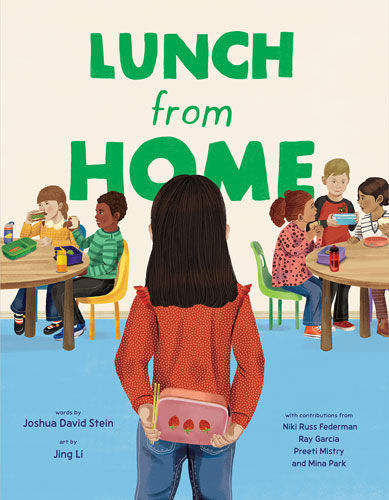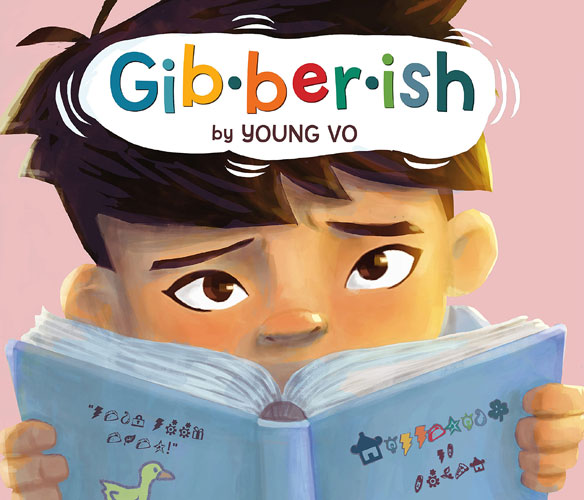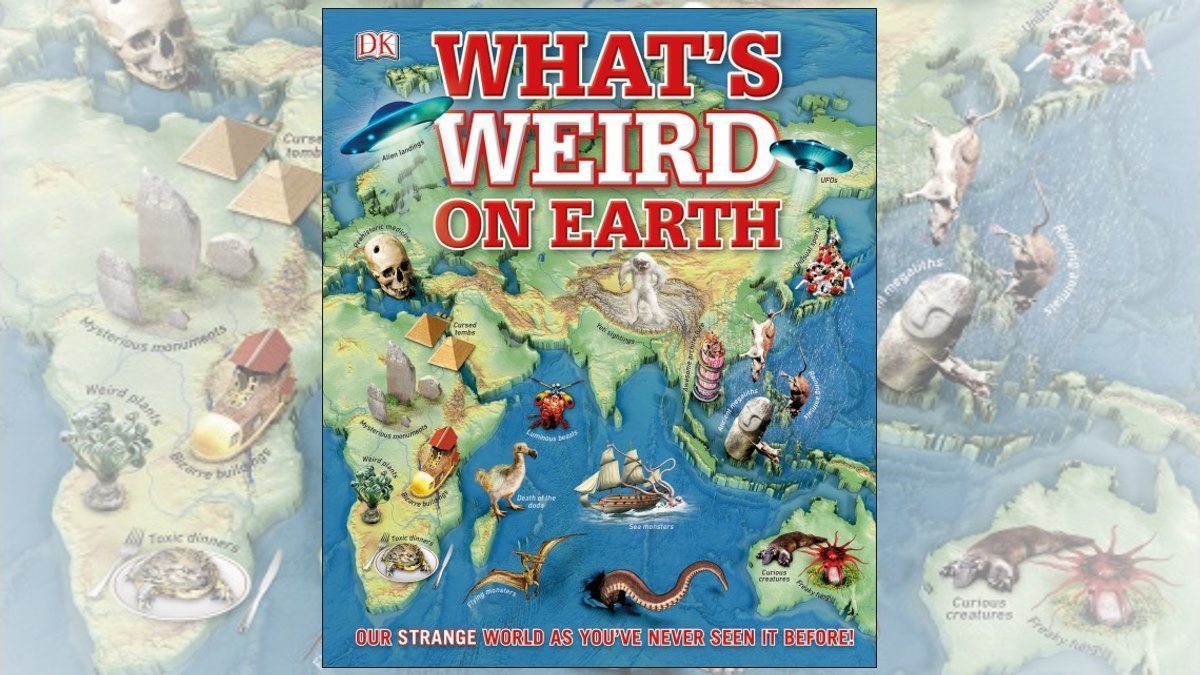My stacks of picture books have been piling up—in part because, as my youngest child got older, we read fewer picture books together and have moved to chapter books. She still ends up reading picture books on her own, but I’ve found that I can no longer keep up and often can’t keep up with everything she’s read. But as my office space is getting taken over by stacks and boxes of books, I thought I’d better start getting through these a bit more quickly!
Today’s picture books are about characters who stand out a bit in some way, whether it’s because they’re new to a place or because they don’t behave the way everyone expects them to. Many of the stories are about how it’s difficult at first to fit in—but then the characters learn how standing out can be a joy, too.
Anzu the Great Kaiju by Benson Shum
Anzu is a young kaiju, but his superpower is … flowers. Although his family tries to teach him how to bring destruction and unleash havoc on his city, Anzu rains seeds and flowers and causes plants to grow, and his city is actually filled with joy. Eventually, though, Anzu learns that this is who he wants to be, whether his family likes it or not—and his family learns to see the value in his way of striking at the heart of his city. The artwork is cute, from the dinosaur-like kaiju to the tiny citizens who look a bit like the Pillsbury dough-boy.
Strong written by Rob Kearney and Eric Rosswood, illustrated by Nidhi Chanani
This picture book is about Rob Kearney, the world’s first and (at least for now) only openly gay professional strongman. The story talks about his strength as a kid and his love of weightlifting, and then his introduction to the Strongman competition. Rob liked to wear bright colorful clothing, but always changed into dark, boring colors during competitions because he didn’t want to stand out. But then he met Joey, who encouraged Rob to be himself and offered to wear colorful outfits so he wouldn’t be alone. Eventually, Rob won the North American championship.
The book closes with a letter from Rob explaining that being who you are is what makes you strong, and that you don’t need to try to make yourself be like the people around you. There’s also a section explaining the Strongman competition in more detail, explaining some of the various feats of strength involved, from flipping giant tires to pulling heavy vehicles.
Lunch from Home written by Joshua David Stein, illustrated by Jing Li
This back-to-school story follows four kids whose lunchboxes are a bit different from most of their classmates. From dhokla cake to gimbap to bagels and lox, each meal draws some unkind comments. By Friday, all the kids are bringing sandwiches instead … until, one by one, the kids decide they prefer their distinctive meals instead. Instead of being embarrassed by their foods, they share the stories about what gives them special meaning.
I remember growing up and getting strange looks for my lunches as a kid myself. I know what it’s like to have somebody say your food stinks or looks gross. I like the way this book really celebrates why each food is special to the kid who brings it, particularly the way that the meals connect them to their homes and their families. The four kids are based on four professional chefs, and there are brief bios of each one at the back of the book.
Where Butterflies Fill the Sky by Zahra Marwan
This is another autobiographical story: Zahra’s family immigrated from Kuwait to New Mexico when she was a child, leaving behind a home that held so much meaning for them. We see Zahra as a young girl, describing her home near the sea and all the things that she loves about it. When they move, she doesn’t really understand why, but eventually she discovers new things that make it feel like home.
In the afterword, Marwan explains a bit more about her family’s story: when Kuwait formally gained its independence, it required everyone to register as a citizen. But Marwan’s father never got the message and became stateless, which then passed on to his children as well. Eventually, stateless people were considered illegal residents, which made it hard to get an education or a job, so the family moved to New Mexico. I hadn’t known about this issue of stateless people—the book says there are nearly 100,000 stateless people still in Kuwait today.
Big Dreams, Small Fish by Paula Cohen
Shirley and her family have immigrated to America and opened up a corner store in their new neighborhood, which is doing well enough. But nobody is buying Mama’s gefilte fish—they won’t even try it. Shirley has a lot of ideas about how to run the store, but Papa says she’s too little and it’s not her problem to solve. One day, though, an emergency arises and Shirley gets a chance to be in charge … and comes up with a surprising plan.
It’s a cute story with a happy ending, and comes with a short glossary of the Yiddish terms used in the book, as well as an explanation about gefilte fish and even a recipe for you to make your own!
Gibberish by Young Vo
It’s Dat’s first day at his new school, in a new land, where everything looks strange and everyone speaks gibberish. The book uses an interesting style to show how foreign the world seems: Dat and his mother are illustrated in color and look human, but the world around them is in black and white in a Steamboat Willie (or Cuphead, if that’s more your speed) sort of style, with strange creatures speaking in dingbats. Dat has a hard time figuring out what anyone is saying and feels lost, until one girl befriends him and helps him learn the language—which also changes her appearance to be in color and human too. As an added bonus, you can use some of the words near the end to figure out the cipher, and go back to see what the other characters have been saying.
This book reminds me a bit of Shaun Tan’s The Arrival (which I wrote about way back when), in that it shows a foreign world by making it look literally alien. This one focuses on language, but that’s an important key to unlocking a new place.
Eric by Shaun Tan
Speaking of Shaun Tan, this little picture book is an odd one: it’s about a foreign exchange student who turns out to be, well, this tiny flower-headed little creature who doesn’t talk. He sleeps in the kitchen pantry and seems fascinated by little things he finds on the ground, and the narrator isn’t really sure what to make of him. His mom chalks everything up to “cultural differences.” It’s a bit like the flipside of The Arrival, in that now the visitor is the one who appears alien, interacting with our “normal” world, and showing us that things we think are ordinary can seem unusual to others, and vice versa.
Disclosure: I received review copies of these books. Affiliate links to bookshop.org help support my writing and independent booksellers!
My Current Reads
My daughter was looking for something to read, and I suggested she try the Bone series by Jeff Smith since she hadn’t read those yet, and she blasted through them (and then read them again). I realized that I’d never actually finished the whole series—I had borrowed them from the library and gotten up to book 6 or so, but it wasn’t until much later that I’d purchased the collection for my older kids as a Christmas gift one year … but then didn’t sit down and finish the story myself! So, I fixed that this past week, starting from the beginning and reading through the nine volumes. It’s a very cool story, with a lot of humor, a fair bit of creepiness, and an epic showdown. I did an Etch-a-Sketch tribute of some of my favorite characters: the stupid, stupid rat creatures.
I’ve also been reading the second book in Mary Robinette Kowal’s Lady Astronaut series, The Fated Sky, and have been enjoying that a lot. The space program has continued to make progress, and now they’re preparing to send a human crew to Mars—but in the meantime, there’s growing unrest from a group called Earth First that feels that we shouldn’t be spending money sending people into space when there are so many problems on Earth.












